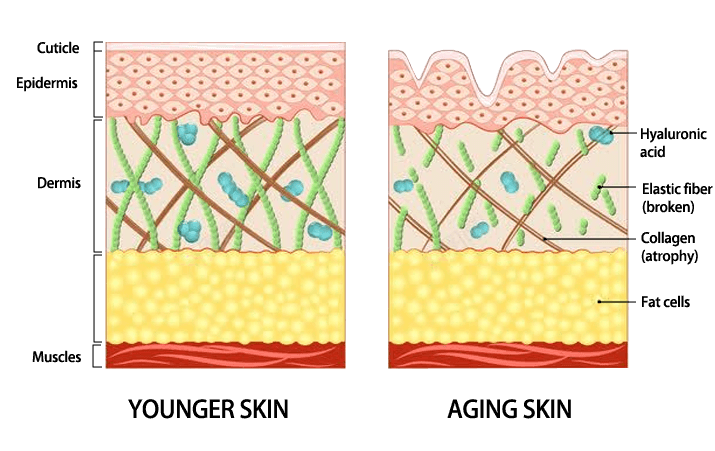Ultrasound
Ultrasound technology employs sound waves to achieve a range of cosmetic and therapeutic effects. In the realm of aesthetics, it’s particularly celebrated for its non-invasive approach to skin rejuvenation, body contouring, and anti-aging treatments. The versatility of ultrasound technology allows it to be used in various treatments, from facial lifting to fat reduction, making it a staple in modern aesthetic clinics and wellness centers.
How does ultrasound work?
Ultrasound brings about short-term, immediate changes as well as much longer-lasting cosmetic results. It does so in a number of ways. The heat and vibrations from ultrasound can be designed to produce thermal effects at various depths of skin and deeper tissues. The heat produced by ultrasound waves increase blood flow providing the fibroblasts, the most common cells in the skin, in assisting the skin to rejuvenate itself and increase collagen production. Ultrasound waves are also capable of selectively injuring the skin to trigger a natural healing response. These combined thermal effects cause the skin lifting, tightening, and firming that can be experienced after ultrasound therapy. The improvements are due to the growth of new collagen and the straightening of elastin fiber in the skin.
Ultrasound energy used in this way also improves the superficial skin layer, exfoliating and smoothing it, and leading to what appears as an improvement in skin colour and complexion. Some patients have reported that their skin also becomes less oily.
Researchers have found that ultrasound energy can temporarily change the structure of the outer skin layer, making it easier for topical applications to reach inner tissue layers. Rapid oscillations caused by ultrasound energy alter the permeability of the cell membranes and increase fibroblast activity and collagen formation.
Sonophoresis is the ability of ultrasound to improve how topical applications pass through the skin barrier. Cavitation, the phenomenon that generates small gas bubbles that grow in size with each additional exposure to ultrasound, causes structural disorder in the skin, leading to enhanced permeability. In particular, it has been established that low frequency ultrasound in the range of 20 kHz is ideal for enhancing skin permeability. Such permeability can last up to 12 hours after ultrasound treatments. These findings open up new possibilities for combining ultrasound with topical skin rejuvenation agents.
How Does Ultrasound for Face Work?
The Ultrasound + RF Machine for a Facelift and Body Contouring GCP156 used in ultrasound skin tightening is much more helpful than laser devices. It penetrates 5 millimeters deep under the skin, reaching the second layer of muscles under the facial muscles. The ability to go this deep is crucial, as collagen production takes place in these lower layers.
The skin’s dermis layer contains most of the specialized structures and cells of the skin. It has decreasing capability to synthesize collagen once you hit the age of 20. For women, the estrogen levels decrease as they age, making the skin thinner and drier.
Through the ultrasound procedure, the dermis is stimulated to produce new collagen. The result is a younger and tighter-looking skin as the tissue provides more support to the skin.

Ultrasound Solutions by Coolpretty
Coolpretty’s application of ultrasound technology in aesthetic treatments exemplifies the innovative approach. Our solutions encompass a variety of treatments aimed at skin tightening, cellulite reduction, and body sculpting. Coolpretty integrates cutting-edge ultrasound functions that are specifically designed for different areas of the body, ensuring precise and effective treatment.
The system range includes:
Ultrasound Technology Advantages
- Effective for Various Treatments: From skin tightening to fat reduction, ultrasound technology is versatile and effective for various aesthetic concerns.
- Minimal Side Effects: Ultrasound treatment is generally associated with minimal side effects, allowing clients to return to their daily activities almost immediately.
- Precise and Controlled: Ultrasound allows for targeted treatment, focusing energy precisely where it's needed without affecting surrounding tissues.
